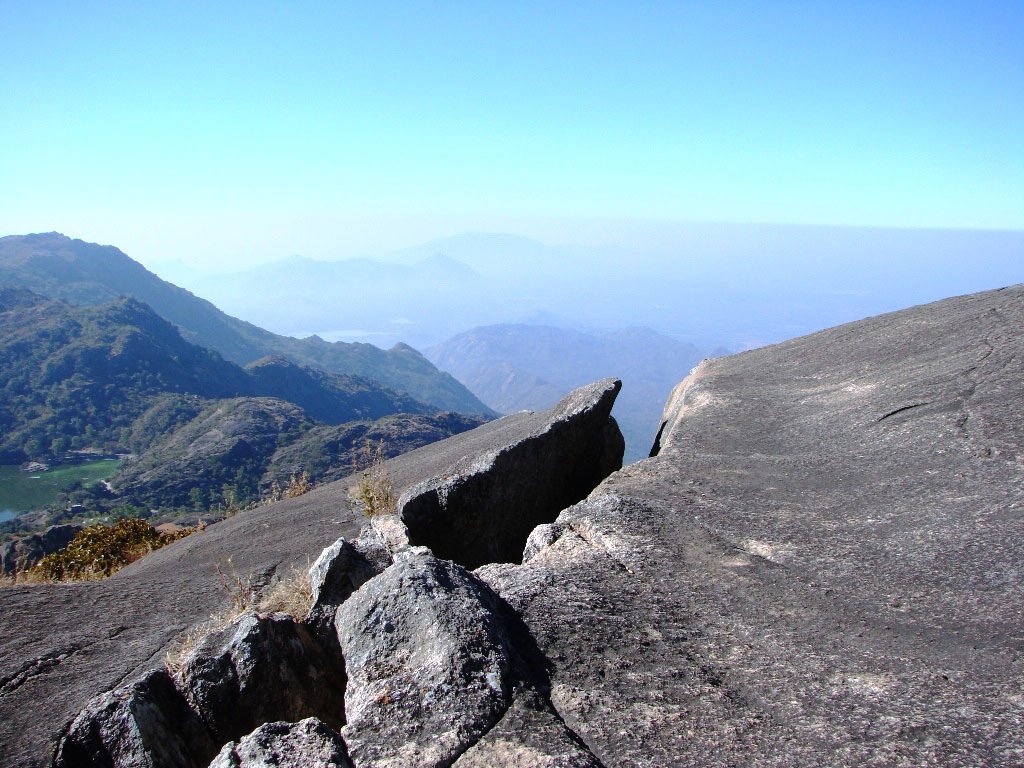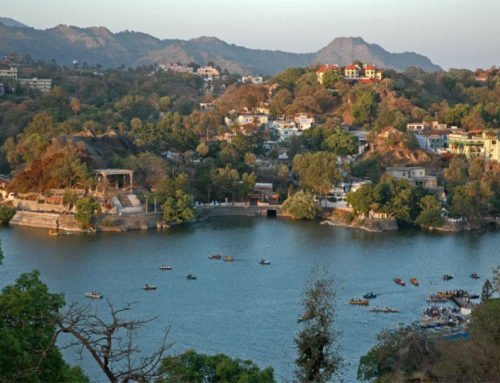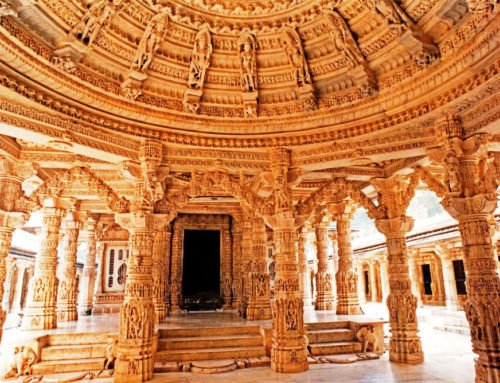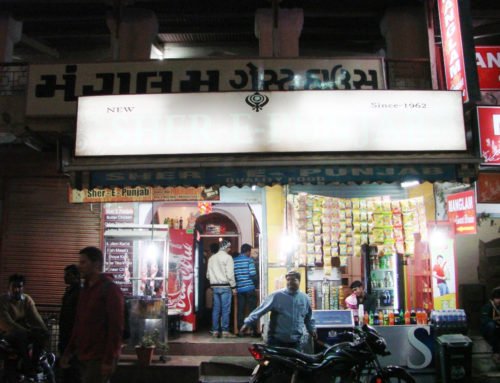Overview
- Highlights: Majestic views, flora and fauna, and caving
- Distance: 10 to 12 kilometres
- Duration: 4 to 5 hours
- Conditions: Hot and dry with a rough, undulating track
- Best Time to Visit: Late October to early March
- Facilities: None
- Start: St Mary’s School
- Finish: St Mary’s School
- Permit / Bookings: Included in the tour price with Hiking & Trekking (Contact Harsh on mtharshdana@gmail.com)
- Address: Mount Abu, Rajasthan, India
Author Reviews[display_rating_item_results rating_form_id=”2″ rating_entry_ids=”1″ show_category_filter=”false” show_options=”true” result_type=”star_rating” preserve_max_rating=”true” show_title=”false” show_count=”false” ]
Total Rating: [display_rating_result rating_form_id=”2″ show_count=”false” show_rich_snippets=true] [accordions load=”1″] [accordion title=”User Reviews” last] [display_rating_item_results rating_form_id=”5″ show_options=”true” result_type=”star_rating” preserve_max_rating=”true” show_title=”false” show_count=”true” show_rich_snippets=true] [/accordion] [accordion title=”Add Review”][display_rating_form show_email_input=”true” show_comment_textarea=”true” show_name_input=”true” rating_form_id=”5″] [/accordion] [/accordions]
Summary
Situated in a mountain on top of the Aravalli Hills, Mount Abu offers some spectacular opportunities to get out and explore nature, and the flora and fauna in the surrounding forests. The Mount Abu tour with Hiking & Trekking is an ideal way to see the natural beauty that Mount Abu has to offer. Spectacular views of the countryside along with caving are some of the highlights of this popular forest / nature trek.
Mount Abu Tour: Forest Trek
Mount Abu, Rajasthan’s only hill station is situated amongst lush green forests on a mountain top at the southwestern end of the Aravalli Hills. The town is surrounded by a rich density of flora and fauna as it is home to the 289-kilometre Mt Abu Wildlife Sanctuary which extends over most of the mountain from an altitude of 300 metres upwards. The best way to take in the natural wonders of Mount Abu is on a forest trek with a Mount Abu tour.
To cut a long story short, one of the owners of the tour company, Hiking & Trekking offered to take us on a forest trek the following morning for a reasonable price, so we agreed given that’s what we wanted to do in Mount Abu. At that time, we didn’t know that they were ranked #1 on Tripadvisor; we hadn’t even heard of them before.
Harsh picked us up from outside our hotel on his scooter at 7:30 in the morning and took us to the meeting point for the start of the forest trek. It was bitterly cold as we were up in the hills, and so much cooler than what we were used to while travelling around the rest of Rajasthan. A couple of other tourists joined us on the Mount Abu tour, and along with the two guides, Harsh and his cousin, we headed off on the forest trek.
[singlepic id=2356 w=720 h=560 float=center]
The Mount Abu tour is aimed at nature lovers who want to explore the natural beauty of Mount Abu. The tour aims to show visitors natural wildlife, tourist attractions, flora and fauna, and the beautiful vistas of Mount Abu.
Some of the nature trails that we went on during the Mount Abu tour were Tiger’s Path, Bayley’s Walk, Craig’s Path and Trevor’s Tank.
[singlepic id=2345 w=720 h=560 float=center]
The trek started off at an easy grade as we walked down a dirt path into the forest. Along the way Harsh stopped to point out some interesting trees and shrubs and show us the medicinal properties of their leaves.
In the photo above he shows us a plant from which curry leaves are picked and used in the preparation of Indian curries. When I plucked a leaf and smelt it, the aroma was really strong and I could see how it would add a lot of flavour to Indian curries.
[singlepic id=2346 w=720 h=560 float=center]
As we walked along the path, we noticed huge granite boulders along each side which had big, deep round marks/crevices in them. Harsh mentioned that natural elements like the rain and wind had caused the weathering of the boulders over time.
[singlepic id=2348 w=720 h=560 float=center]
As we walked along, the grade became steep and we had to climb over rocks and boulders. We had started climbing up the mountain as our aim was to get to the top for spectacular views over Mount Abu and Nakki Lake.
The terrain was difficult as the rock was slippery in areas and loose rocks fell away as we stood on them. Nonetheless, the climb was fun and the exercise made me break a sweat which is better than being cold.
[singlepic id=2379 w=720 h=560 float=center]
The higher up the mountain we climbed the sparser the vegetation became. We could see the tops of several huge granite boulders whose tops had been smoothened out over the years. The vegetation in these areas was sparse and scraggy.
As we peaked over the boulders we could make out Mount Abu town in the distance and I knew that the views were going to be spectacular from higher up.
[singlepic id=2352 w=720 h=560 float=center]
It was still misty by the time we got to the top of the mountain. Nevertheless, the views were still magnificent. At first glace, the first thing that I saw was the Aravalli ranges that surround Mount Abu in every direction. The town is situated in a valley with the ranges all around it. In the mist, we could see the silhouette of the Aravalli hills which looked really magnificent. The mist seemed to add a magical dimension making the view so much more enchanting.
[singlepic id=2366 w=720 h=560 float=center]
The aim of the forest trek was to spend some time walking along the mountain ridge so we could stop at multiple points along the way for the varied vistas of the Aravalli Hills, Nakki Lake and Mount Abu town.
As we walked along the top of the mountain we got to another viewpoint. From here, we could see Nakki Lake in the distance with Mount Abu town situated behind it.
[singlepic id=2365 w=720 h=560 float=center]
Nakki Lake lies at the heart of Mount Abu and is the centre around which the town flourishes. According to legend, Mount Abu was created when a Hindu god scooped out a chunk of earth with his nakh (nails). Hence, it is considered to be a holy place for Hindus.
The lake is surrounded by hills, parks and strange rock formations created by erosion caused by the natural elements. The most famous of these rock formations is Toad Rock which derives its name from its looks – a toad about to hop into the lake.
The 14th century Raghunath Temple stands near the lake’s south shore which can be seen from any vantage point on the mountain.
[singlepic id=2354 w=720 h=560 float=center]
Harsh pointed out a couple of interesting attractions that we would never have seen otherwise. Of the attractions we saw, the most interesting attraction was some white buildings which happened to be the headquarters of the worldwide organisation of the Brahma Kumaris World Spiritual University.
Brahma Kumaris teaches that all religions lead to God and are equally valid, and that principles of each should be studied. Its aim is the establishment of universal peace through the ‘impartation of spiritual knowledge and training of easy raja yoga meditation’. Thousands of followers visit Mount Abu every year for intense meditation or outreach programs.
[singlepic id=2360 w=720 h=560 float=center]
We headed back into the dense vegetation of the forest so Harsh could show us some of the interesting flora and fauna in the area. Most of the plants in the forest are used for their medicinal properties by locals for the production of Ayurvedic medicine.
The Sanctuary abounds in Kachnar, Karonda (berry-like fruit, see picture above), Mango, Khajur (dates) and Amla (see picture below) and other herbs and plants with medicinal value.
[singlepic id=2358 w=720 h=560 float=center]
[singlepic id=2359 w=720 h=560 float=center]
The Mount Abu Wildlife Sanctuary is home to 112 plant families; most of these species are dicots and the rest are monocots. Many of these species are very rare and threatened. Mount Abu is well-known for their beautiful orchids as well as other floral plants such as roses, champa and jasmine.
[singlepic id=2343 w=720 h=560 float=center]
More than 250 species of birds are also found here, but the specialty of the Mount Abu Sanctuary is the grey jungle fowl. While we were high up in the mountain, we saw a couple of grey jungle fowls which looked very similar to poultry chickens except these were grey.
[singlepic id=2342 w=720 h=560 float=center]
The past history of Mount Abu indicates the presence of Lion and Tiger, last seen in 1872 and 1970 respectively. Presently, the Panther is the apex predator. Other animals found here are Sambhar, Jungle Cat, Small Indian Civet, Wolf, Hyena, Jackal, Indian Fox, Common Langoor, Wild Boar, Pangolin, Ratel, Common Mongoose, Indian Hare, Porcupine and Hedgehog.
The Sanctuary provides an ideal habitat for Sloth Bear. The population of Sloth Bear is increasing regularly as it can be seen easily most days.
A bit deeper into the forest, we noticed scratch marks about three feet high on one of the tree trunks. Harsh told us that those marks were made by the nails of sloth bears, and if we were lucky enough we would even spot some lurking around the forest. We did see a sloth bear lurking in the thick vegetation of the forest however we were advised to stay far away.
[singlepic id=2362 w=720 h=560 float=center]
After walking through the forest, we made our way back up to the top of the mountain for spectacular views over a different area of Mount Abu. This time we were looking over villages and fields in the distance surrounded by huge granite boulders shaped by the wind and the rain over several hundreds of years.
[singlepic id=2363 w=720 h=560 float=center]
Harsh mentioned that Mount Abu is surrounded by seven lakes as it is located at high altitude on a mountain in the Aravalli Hills.
Nakki Lake is the biggest of the seven lakes however there are smaller lakes in the area which provide a good water source to the villages nearby. From this viewpoint, we could see one of the smaller lakes in the distance.
[singlepic id=2364 w=720 h=560 float=center]
The ancient and sacred hills of the Aravalli Ranges have been the abode of the Gods and as a result have become the hermitage of the Vedic Rishis of India. The mountain is of great spiritual importance for both Hindus and Jains and has over 80 temples and shrines.
While walking through the mountain and forest area Harsh took us to a couple of shrines that had been made underneath a rock or inside a boulder crevice. Signs that it was used once by a hermit or sage could be seen from the images of Hindu deities painted on the rocks and fires having been burnt inside.
[singlepic id=2369 w=720 h=560 float=center]
One of the main reasons we went on this Mount Abu tour with Hiking & Trekking is because they are keen mountaineers who take visitors caving in the mountain as well. This was one of the highlights of the forest trek as we really enjoy bouldering and caving as part of a trek.
[singlepic id=2372 w=720 h=560 float=center]
We went into several caves along the way guided by Harsh and his cousin who knew where every cave worth visiting was located. Some caves as the one in the picture above was easy to manoeuvre. Climbing in and out was simple as the rocks and boulders were broken and the opening was wide enough to walk into the cave with ease. Inside the cave, there was a lot of space to walk around with enough light to see where we were going.
[singlepic id=2375 w=720 h=560 float=center]
Other caves were tight and difficult to manoeuvre. One cave in particular we had to really scramble around especially when we were climbing out. The cave was deep and very tight in spaces and I needed to be pushed up so I could climb out of the deep cave. Nevertheless, it was a wonderful experience and everyone in the group enjoyed the adventure of this experience.
At one of the vantage points on top of the mountain, the wind and rain had created a very smooth rock surface where we could stop and rest while enjoying the views around us. We were standing on a precipice and when we looked down there was a vertical drop of about 500 metres to the bottom of the valley. It felt like we were standing on top of the world looking to over the Aravalli Hills around us with the valley floor below our feet. It was an incredible feeling and we really enjoyed this spot.
[singlepic id=2378 w=720 h=560 float=center]
Finally, we made our way back to the starting point of our tour. Towards, the end of the tour, the road became flat again and we were walking on smooth igneous rock which was one of the easier sections of the trek route.
A big part of the Mount Abu tour entails a lot of scrambling and climbing over rocks and boulders which classifies this trek as a difficult grade. Also, for a forest trek that lasts for four to five hours requires one to have a high level of fitness and endurance.
I must make a note here that while this Mount Abu tour is classified in the difficult grade, Hiking & Trekking do analyse the age, fitness level and endurance of the people in the trekking group before they chose the trails for the forest trek. They will alter the routes depending on the group dynamics so whatever fitness level you are this Mount Abu tour will be adjusted to suit your level.
If you are a nature lover and want to get out and see the natural beauty of Mount Abu, this Mount Abu tour with Hiking & Trekking is one of the best forest treks in town. Being one of the few places in Rajasthan where one can get up and close with flora and fauna, this Mount Abu tour comes highly recommended by us.






How much should hotel rooms be there?
US$20 or 1000 rupees for a basic low grade room, you can pay more or less depending on the setting and season. In summer, expect 50-100% more per room.
Is mount abu a skiing destination?
Hi Ben,
It is not a skiing destination, but a nice place to escape the heat in summer.